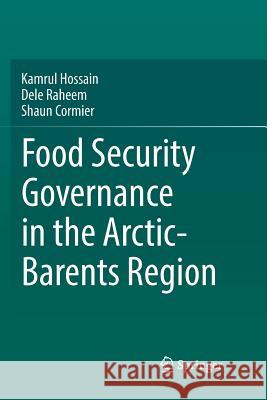Food Security Governance in the Arctic-Barents Region » książka
topmenu
Food Security Governance in the Arctic-Barents Region
ISBN-13: 9783030093198 / Angielski / Miękka / 2019 / 142 str.
Kategorie:
Kategorie BISAC:
Wydawca:
Springer
Język:
Angielski
ISBN-13:
9783030093198
Rok wydania:
2019
Wydanie:
Softcover Repri
Ilość stron:
142
Waga:
0.23 kg
Wymiary:
23.39 x 15.6 x 0.89
Oprawa:
Miękka
Wolumenów:
01
Dodatkowe informacje:
Wydanie ilustrowane











